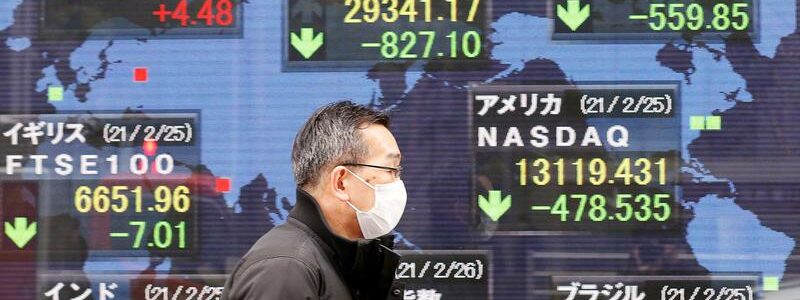
Asian shares shrug off Delta woes to hit 1-week highs
SYDNEY (Reuters) – Asian shares shrugged off caution over the rapidly spreading Delta variant of the coronavirus to advance to one-week highs on Wednesday led by strong U.S. corporate earnings and successful vaccine rollout globally.
In a sign the positive mood will extend overseas, eurostoxx 50 futures added 0.3% while German Dax futures and those for London’s FTSE were up 0.1% each. U.S. futures were slightly weaker with E-minis for the S&P 500 a nudge lower.
Asian markets had started on a jittery note but bounced strongly in mid-morning trades.
MSCI’s broadest index of Asia-Pacific shares outside Japan was last 1.1% up for its third straight day of gains to the highest since July 26.
Japan’s Nikkei was in the red while Chinese shares were quick to turn positive after starting lower. The blue-chip index added 0.7% as did Shanghai’s SSE Composite.
Australian shares were a touch firmer, though sentiment was marred by an unabating rise in Delta infections in Sydney, the country’s biggest city.
Most other Asian indexes were also higher.
Stronger-than-expected profits from U.S. companies in recent weeks have ratcheted up already high Wall Street forecasts on how second-quarter earnings growth will look versus last year.
Close to 90% of companies listed on the S&P500 have reported positive earnings surprises for the second quarter, according to National Australia Bank (NAB) economist Tapas Strickland.
“Our baseline forecast for strong global growth to further gather steam in 2H21 has remained unchanged in recent months,” JPMorgan analysts wrote in a note.
“The central pillar of our global outlook is that vaccines will sever the link between COVID-19 and economic activity,” they added.
“While we expect this process to take place gradually we project progress on this path to be sufficient to unleash significant pent-up demand in 2H21. The growth bounce is already well established in the U.S. and we believe it started in Europe last quarter.”
Investors had been worried about the broader economic outlook with Australia’s largest city in its sixth week of lockdown and other countries battling a spike in infections.
Chinese media have reported 31 provincial regions have warned residents against unnecessary travel in light of recent outbreaks. The mainland reported 96 new cases for Aug. 3, of which 71 were locally transmitted.
“Wuhan has begun city-wide testing in an eerie echo to the original COVID-19 outbreak,” NAB’s Strickland said.
“While China’s resolve to control outbreaks has been well illustrated, markets will continue to watch the outbreak given the high transmissibility of the Delta variant. There are also concerns China’s domestic vaccines are less effective against the Delta variant.”
Wall Street’s main stock indexes were choppy overnight but finished higher with notable gains from Apple Inc, Eli Lilly and Robinhood Markets Inc.
The S&P 500 gained 0.8% to finish at 4,423.15 – another record closing high – while the Dow rose 0.8% and the Nasdaq added 0.6%.
Investors expect volatility to increase in August as more companies report earnings and the market hears from Federal Reserve officials in coming weeks. U.S. non-farm payroll numbers are due on Friday.
The U.S. dollar eased against the Japanese yen and Swiss franc as questions about slowing U.S. economic growth and the Delta variant challenged risk appetite.
The dollar was near a two-month trough against the yen at 109.06. Against the Swiss Franc, the dollar hovered near its lowest since mid-June at $0.9034.
The New Zealand dollar bolted higher after super-strong jobs data cemented expectations for a hike in interest rates this month. The kiwi swung up to $0.7066, a gain of 1% for the week so far.
The risk sensitive Australian dollar was relatively upbeat at $0.7396, but that was largely due to a positive economic assessment by the country’s central bank on Tuesday.
In commodities, Brent futures added 4 cents to $72.45 a barrel. U.S. crude settled down 13 cents at $70.43 a barrel.
Spot gold inched higher to $1,812.8 an ounce.
Source: Read Full Article